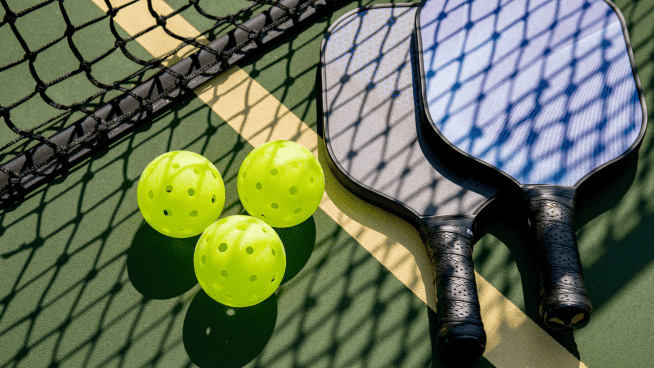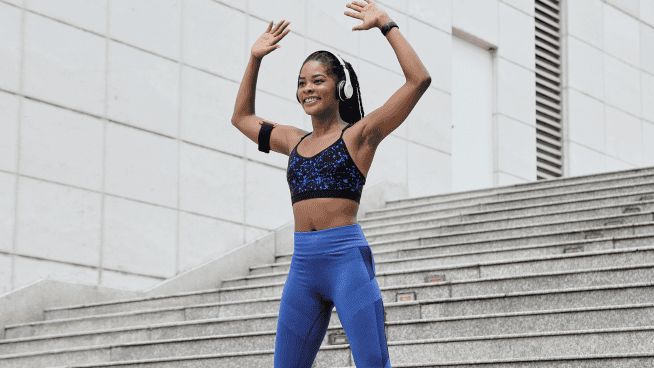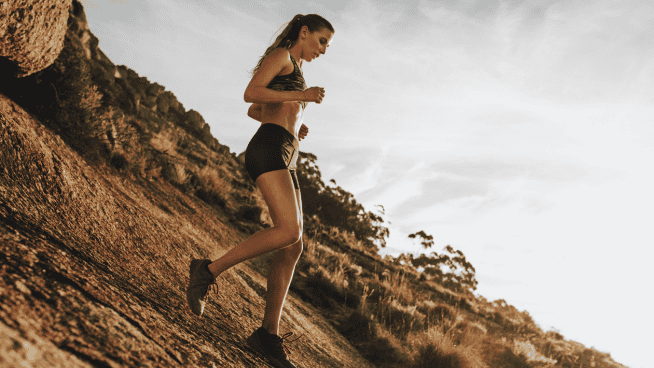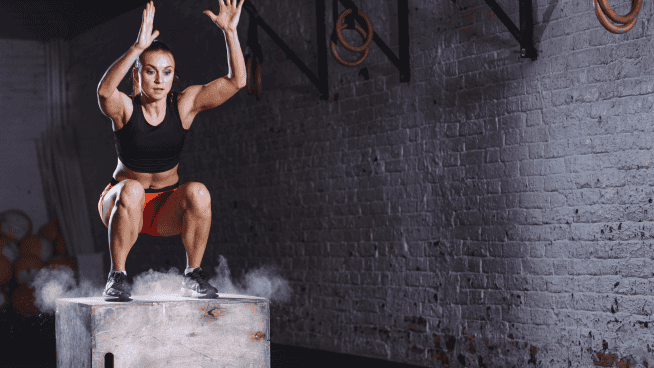Sled Training For Everyone
There doesn’t seem to be a piece of exercise equipment that is as versatile and beneficial for various goals and jobs as a sled. As coaches, we often speak about picking the right tool for the right job. The sled is similar to a swiss army knife and can be used for several different positions and be appropriate and the most effective option for all of them.
A sled can be used with an individual of any age, level, or ability if used appropriately. It can be utilized if an individual’s goals are to become more powerful and athletic, bigger and stronger, or even if they are looking to lose some body fat and live a healthier lifestyle. Sleds are also extremely affordable, you could build one yourself even if you needed to, and they take up little to no space whatsoever. It’s tough not to say that a sled is an essential tool you need in your tool belt.
I would rarely if ever, speak in terms of absolutes when it comes to training. There are too many variables physically, emotionally, and psychologically that come into play when working with real people face to face. Adjustments of a program can sometimes occur at the snap of a finger. Although without a doubt, I can say sled training makes sense for everyone. I have used the sled for my youth athletes in middle school, high school, and college athletes. I have used them for stay at home moms and even elderly clients. Completely different sides of the spectrum, not only as limitations but also with goals and responses we were trying to create. All used the same tool, though.
Reasons Training With A Sed Makes Sense For EVERYONE:
No axial loading
Unlike some barbell movements using a sled requires zero loadings of the spine and is much easier on the body, even when using heavier loaded movements. Sled movements also involve no eccentric muscle actions; this aids in the prevention of muscle soreness.
No axial loading also creates safer alternatives for youth or older individuals. Instead of training the lower body by loading up a heavy barbell back squat or deadlift, using a heavy sled push or drag creates an excellent stimulus for the lower body without as much risk.
Easy to teach
Training with a sled typically requires less coaching cues and instruction than a standard barbell lift. Imagine teaching an individual how to perform a barbell bent-over row—many struggle with maintaining a neutral spine position while rowing the weight. When using the sled to complete a row, it is harder to perform the movement incorrectly, as the sled forces the individual to self organize and maintain a neutral spine, chest up. Proper body positioning when they pull the sled into them. If that isn’t achieved, the sled will not move as effectively. This alone helps cue the athlete into better position and posture when performing movements, as they can feel this for themselves.
The complexity of sled movements is far less than that of its free-weight counterparts and while it is not the same you can still teach and train large compound movements effectively on a sled.
Bench Press — Sled Chest Press
Olympic Lift Variations — Sled High Pull/Row
Back Squat — Sled Drag/Push
Bent Over Row — Sled Row
Easy to progress/regress
Sled progressions and regressions come quickly in exercise selection. You can progress a movement by adding additional weight or additional reps and increasing the distance of a movement or time of it being performed. This can be done in testing individuals in several ways, including endurance tests, strength, speed, and power.
Increase in General Physical Preparation (GPP)
No matter who you are or your goal, you will need a decent level of general physical preparation, or GPP, to achieve those goals. GPP is the base for all bio-motor abilities such as strength, speed, power, and endurance, so without a high level of GPP, those other attributes won’t be as high as they could potentially be. GPP can be your limiting factor to continue making progress in your training.
Any type of sled exercises will contribute to a high level of GPP. Whether it be upper body movements such as pulls and presses or merely walking with a sled for some time will help create a tremendous work capacity.
Bodyweight Drag Challenge
Forward Sled Drag with 100 percent of body weight on the sled for 20 minutes. If an individual weighs 120lb then they will drag a 120lb sled
Upper Body Extra Workout
Sled Rows 10x, Sled Presses 10x, Sled Bicep Curls 10x, Sled Tricep Extensions 10x – repeat series for 10 minutes without stopping.
Sled Drag/Sled Push
Drag sled for 20 yards, Push sled back 20 yards – repeat 5x, simple yet highly effective. Along with the benefit of increasing work capacity, GPP workouts also are great for improving weak areas, such as the hip flexors or upper back. It can be implemented to help improve body composition and a big benefit is to promote restoration and recovery between intense training sessions.
Improve Acceleration Sprinting Mechanics
Speed is something that every athlete needs. Coaching through many technical aspects of speed training can get lost in translation and create uncertainty amongst coaches on helping get their athletes better.
Performing movements with the sleds such as marches, bounds, and sprints help improve strength in the lower body and increase the rate of force development. How much force you can put through the ground to get you from point A to point B faster. Whether you are pushing the sled or pulling the sled behind you, either option is great with a belt.
The sled also puts your body into a natural acceleration position, the position they should essentially be in when they come out of their start. It isn’t easy to coach something as technical as sprinting to non-track based athletes, so any movement where the individual will work the process out themselves is a double win. You can see this position, especially in acceleration sled drags and pushing a sled.
Regardless of who you are and what you want to accomplish, there should be some aspect of sled training in your program. It is an essential tool that can be utilized in so many ways to help develop overall health and athleticism aspects.
RECOMMENDED FOR YOU
Sled Training For Everyone
There doesn’t seem to be a piece of exercise equipment that is as versatile and beneficial for various goals and jobs as a sled. As coaches, we often speak about picking the right tool for the right job. The sled is similar to a swiss army knife and can be used for several different positions and be appropriate and the most effective option for all of them.
A sled can be used with an individual of any age, level, or ability if used appropriately. It can be utilized if an individual’s goals are to become more powerful and athletic, bigger and stronger, or even if they are looking to lose some body fat and live a healthier lifestyle. Sleds are also extremely affordable, you could build one yourself even if you needed to, and they take up little to no space whatsoever. It’s tough not to say that a sled is an essential tool you need in your tool belt.
I would rarely if ever, speak in terms of absolutes when it comes to training. There are too many variables physically, emotionally, and psychologically that come into play when working with real people face to face. Adjustments of a program can sometimes occur at the snap of a finger. Although without a doubt, I can say sled training makes sense for everyone. I have used the sled for my youth athletes in middle school, high school, and college athletes. I have used them for stay at home moms and even elderly clients. Completely different sides of the spectrum, not only as limitations but also with goals and responses we were trying to create. All used the same tool, though.
Reasons Training With A Sed Makes Sense For EVERYONE:
No axial loading
Unlike some barbell movements using a sled requires zero loadings of the spine and is much easier on the body, even when using heavier loaded movements. Sled movements also involve no eccentric muscle actions; this aids in the prevention of muscle soreness.
No axial loading also creates safer alternatives for youth or older individuals. Instead of training the lower body by loading up a heavy barbell back squat or deadlift, using a heavy sled push or drag creates an excellent stimulus for the lower body without as much risk.
Easy to teach
Training with a sled typically requires less coaching cues and instruction than a standard barbell lift. Imagine teaching an individual how to perform a barbell bent-over row—many struggle with maintaining a neutral spine position while rowing the weight. When using the sled to complete a row, it is harder to perform the movement incorrectly, as the sled forces the individual to self organize and maintain a neutral spine, chest up. Proper body positioning when they pull the sled into them. If that isn’t achieved, the sled will not move as effectively. This alone helps cue the athlete into better position and posture when performing movements, as they can feel this for themselves.
The complexity of sled movements is far less than that of its free-weight counterparts and while it is not the same you can still teach and train large compound movements effectively on a sled.
Bench Press — Sled Chest Press
Olympic Lift Variations — Sled High Pull/Row
Back Squat — Sled Drag/Push
Bent Over Row — Sled Row
Easy to progress/regress
Sled progressions and regressions come quickly in exercise selection. You can progress a movement by adding additional weight or additional reps and increasing the distance of a movement or time of it being performed. This can be done in testing individuals in several ways, including endurance tests, strength, speed, and power.
Increase in General Physical Preparation (GPP)
No matter who you are or your goal, you will need a decent level of general physical preparation, or GPP, to achieve those goals. GPP is the base for all bio-motor abilities such as strength, speed, power, and endurance, so without a high level of GPP, those other attributes won’t be as high as they could potentially be. GPP can be your limiting factor to continue making progress in your training.
Any type of sled exercises will contribute to a high level of GPP. Whether it be upper body movements such as pulls and presses or merely walking with a sled for some time will help create a tremendous work capacity.
Bodyweight Drag Challenge
Forward Sled Drag with 100 percent of body weight on the sled for 20 minutes. If an individual weighs 120lb then they will drag a 120lb sled
Upper Body Extra Workout
Sled Rows 10x, Sled Presses 10x, Sled Bicep Curls 10x, Sled Tricep Extensions 10x – repeat series for 10 minutes without stopping.
Sled Drag/Sled Push
Drag sled for 20 yards, Push sled back 20 yards – repeat 5x, simple yet highly effective. Along with the benefit of increasing work capacity, GPP workouts also are great for improving weak areas, such as the hip flexors or upper back. It can be implemented to help improve body composition and a big benefit is to promote restoration and recovery between intense training sessions.
Improve Acceleration Sprinting Mechanics
Speed is something that every athlete needs. Coaching through many technical aspects of speed training can get lost in translation and create uncertainty amongst coaches on helping get their athletes better.
Performing movements with the sleds such as marches, bounds, and sprints help improve strength in the lower body and increase the rate of force development. How much force you can put through the ground to get you from point A to point B faster. Whether you are pushing the sled or pulling the sled behind you, either option is great with a belt.
The sled also puts your body into a natural acceleration position, the position they should essentially be in when they come out of their start. It isn’t easy to coach something as technical as sprinting to non-track based athletes, so any movement where the individual will work the process out themselves is a double win. You can see this position, especially in acceleration sled drags and pushing a sled.
Regardless of who you are and what you want to accomplish, there should be some aspect of sled training in your program. It is an essential tool that can be utilized in so many ways to help develop overall health and athleticism aspects.










